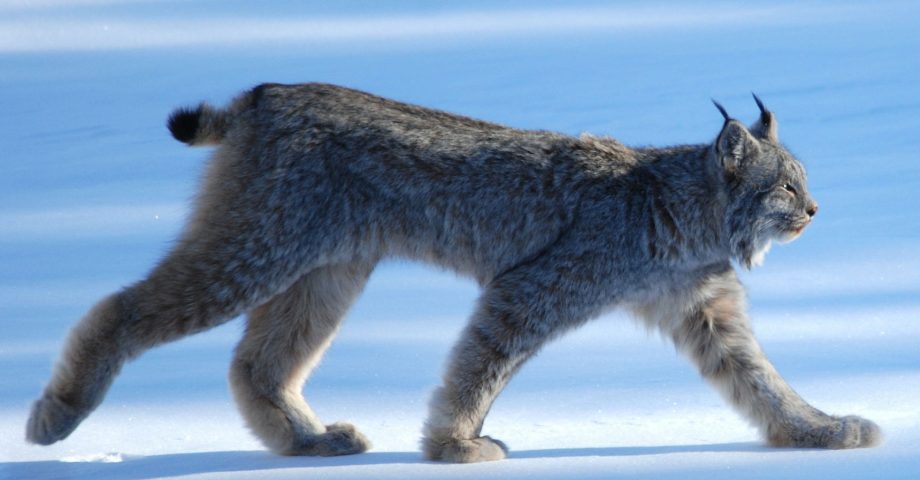Whether you’re a cat person or not, there is no denying that lynxes are some of the most beautiful animals on the planet! However, these stunning creatures are better admired from afar – never try to get close enough to pet them! However, just because we can’t be too close, it doesn’t mean that we can’t get to know them a little better. Here are some fun facts about lynxes to help enlighten you on these feisty felines!
1. Young lynxes tend to be very clingy!
As with all babies of the animal kingdom, infant lynxes need a lot of support and care during their formative years. In fact, lynxes develop much slower than many other mammals, and depend on their mothers for months after coming into the world. They don’t open their eyes until about ten days after birth, they can’t go out of their habitat until five weeks have passed, and the weaning only starts at about two months in!
2. It’s all about the real estate!
Unlike birds who can make their own nests wherever they choose, lynxes need to find somewhere particularly suitable to raise their young. That is why female lynxes will often look across cliff ledges, in dense vegetation, or in tree caves for places to keep their young safe.
3. They’re smart hunters.
As cute as they may look in photos, it is important to remember that lynxes are indeed predators, and they’re pretty incredible hunters! And, unlike many of their feline relatives, lynxes are hyper-focused. They’ll track prey for as long as it takes – making them some of the tenacious beasts in the animal kingdom.

4. Lynx fertility is fairly restrictive.
Lynx fertility windows are surprisingly short compared to other mammals. Lynxes typically only have one month out of a year to become pregnant. Their mating season usually runs from February through to March. Then, their pregnancies typically last from 63 to 72 days.
5. The cry of the lynx!
All male animals have their strange mating rituals, and lynxes are no exception! Since the mating season is so short for these beasts, the males tend to get very competitive, and begin making high-pitched noises that end in lengthy wails. They’ll then engage in intense fights with other threatening males. Not too dissimilar from male humans, then!
6. Lynxes are well-prepared for winter living.
Lynxes can thrive in any cold climate, and are commonly found across North America, parts of Europe, and Asia. They have naturally thick coats – especially around their paws! And, when their feet touch the ground as they walk, they splay them out to better distribute their weight. That is similar to what we do when we wear snowshoes to avoid falling into the ice!
7. Na’vi on Earth?
Lynxes may be the closest we’ll get to the feline-esque creatures, the Na’vi, of the Avatar movies. Believe it or not, there are some lynxes in the world that are naturally blue! Or, rather, a genetic abnormality can make them turn blue. However, these tinted critters are pretty rare!
8. Lynxes frequently mark their territories.
If you have ever owned a dog or a cat, you may know that they urinate in certain places to mark their territories. As it happens, lynxes do the exact same thing! They generally pee on trees, scrape the ground and trunks with their back feet, and rub their heads and necks on surfaces to leave their scents.
9. They’re hardly pack animals.
Lynxes do not move in groups. They generally travel alone, keep to themselves, and are all-around pretty solitary animals! They are only really together during mating season, or when raising young. Occasionally, young lynxes will stick together for support when first exploring the world.

FAQs about Lynxes
Do lynxes live in Europe?
Lynxes can be found all around Europe. However, they are mostly found in the Central Apennines, Velebit Mountains, Swedish Lapland, Oder Delta, and Southern Carpathians.
Are lynxes and bobcats the same?
Bobcats and lynxes are indeed a part of the same wild cat genus, which includes two others, the Canadian lynx and the Iberian lynx!
Further reading:
https://facts.uk/tag/Cats
https://animals.sandiegozoo.org/animals/lynx-and-bobcat
https://www.britannica.com/animal/lynx-mammal
Do you know any fun facts about lynxes? Share them in the comments below!










